
| MENU SELECTION: | WW1 Aviation | My Fleet | DixieBoys | The Italian Campaign | WW2 Books | GI Biographies | Websites |
WW1 Aviation Photo Gallery
This page contains a few photos I've
collected
that relate to WW1 airplanes and militaria. Some are photos I've
taken at museums. Some photos are thumbnails; click on photo to
bring
up the full photo.

Hanroit HD-1 in
Belgian
Air Service.
Made in France but used by Italians and
Belgians.
Looks like a Nieuport, except for dihedral of top wing. The
Thistle
was the insignia of the 9th Escadrille, which used green and white
patterns
on the cowl and /or horizontal tail for personal markings.
Hanroit
was favorite mount of Willy Coppens. (Photo supplied by an email
contact in a Belgian Soaring Club.)
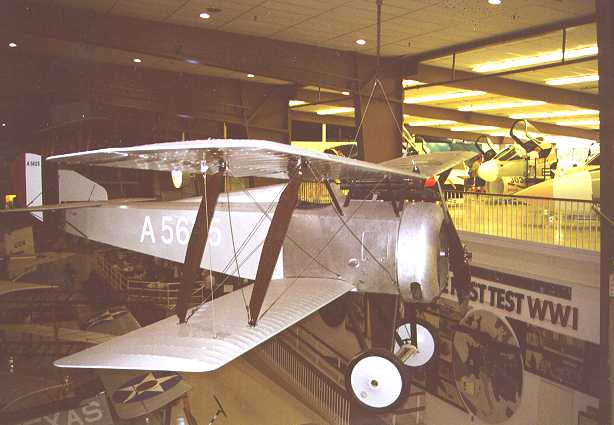
Hanroit HD-1 in
United
States Service.
I never thought I would get to see one, but
here is the proof. This photo was taken at US Navy Museum at
Pennsacola,
FL. After the War, the US purchased some Hanroit HD-1. This
USN paint scheme and a photo is shown in the Profile Publications No.
109.

Captain Frederick W. Gillet was an American native of Baltimore, MD and attended Univ. of Virginia. He joined the British RAF and flew with Squadron No. 79. Gillet was the 2nd highest ranking American ace behind Eddie Rickenbacker with 20 confirmed victories. He held the highest score of any pilot flying the late-model Sopwith Dolphin 5F.1.
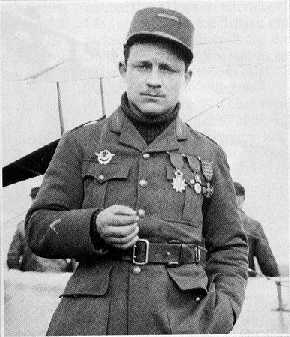
Major Gervais Raoul Lufbery was born of an American father. This allowed him to join other American volunteers who established France's Lafayette Escadrille. His score of 16 kills makes him as the highest ranking ace of the Lafayette Escadrille. Transferred to the 94th Aero Squadron(US), he trained a number of fledgling American pilots, such as Rickenbacker. He was shot down on May 19, 1918. He is shown here in his French uniform & medals.
Sopwith Triplane This aircraft began a phase of developement of a light, agile airframe with three wings that provided extraordinary lift and turn capabilities. The British Navy traded all their available SPAD VII for promise of delivery of all triplanes on order by Royal Flying Corps.
Bristol F.2B "Brisfit"
A replica in post war grey that was owned by a
local FedEx pilot.
The first 2-seat aircraft to successfully perform in role of a
fighter.
Note twin Lewis guns in rear-facing gunner's seat. (Yours
truly wearing a Russian Air Force visor cap.)
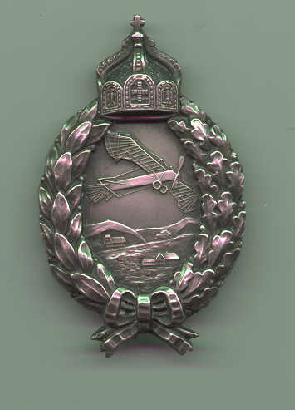 2
2  3
3 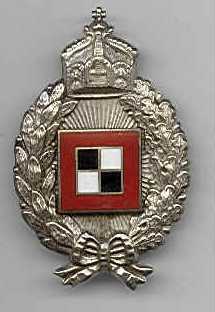
1. German Pilot's Badge
Note differences in crowns.
2. Bavarian Pilot's Badge
3. Prussian Observer's
Badge
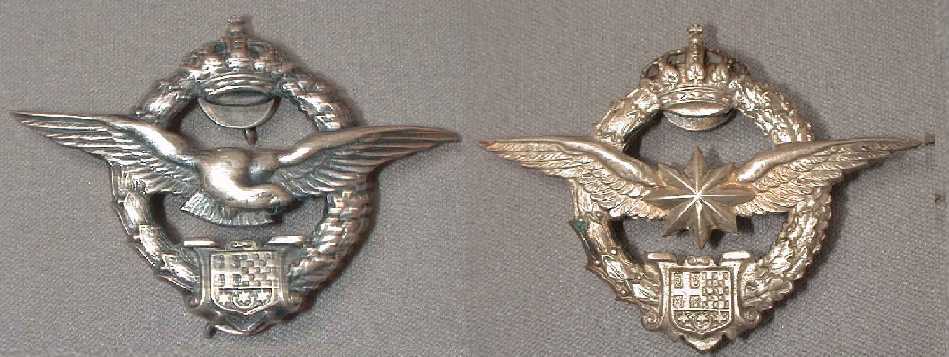
Yugoslavian Pilot's &
Observer's
Badge {Click on picture to enlarge}
With Yugoslavia in the news, I thought this would be an
interesting
item. Note the crest. The round piece under the crown is the
attaching
device on back. I was told this was an early WW1 example of
Yugoslavian
pilot's badge even though that country was not formed until after WW1.
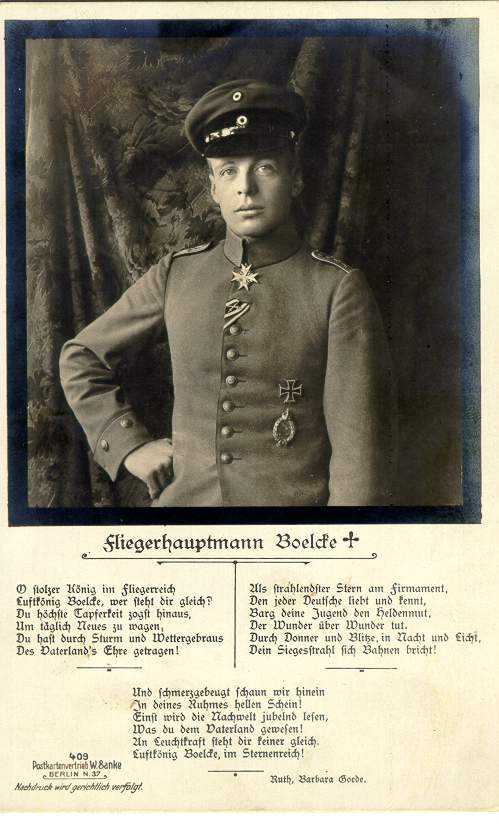
Oswald
Boelcke {Click on picture to enlarge}
First German ace.
Died on October 28, 1916, when his Albatros D-II collided with the
undercarriage of his wing man's aircraft, causing his upper wing to
collapse.
Attained 40 victories. He wrote the following dicta(at
bottom of page) for the fighter pilots he trained.
Rittmeister
Manfred Frieherr
von Richthofen {Click
on picture to enlarge}
Leading ace of WW1. This photo
was included to illustrate his uniform. Since most air forces were
still
in their infancy and an arm of the army, there was no distinctive
uniform.
Therefore, a pilot usually retained the uniform and rank of his prior
service.
Baron von Richthofen had been a member of 1st Regiment of Uhlans (or
Lancers)
- thus his double-breasted coat, shown above. The rank of Rittmeister
in the Uhlans translates as "riding master" and was equivalent
to
a Captain. His title of royalty was 'Frieherr'
or Baron.
|
Dicta Boelcke
1.
Always try to secure an advantageous position before attacking. Climb
before
and during the approach in order to surprise the enemy from above, and
dive on him swiftly from the rear when the moment to attack is at
hand.
|
Return to Top of Page.